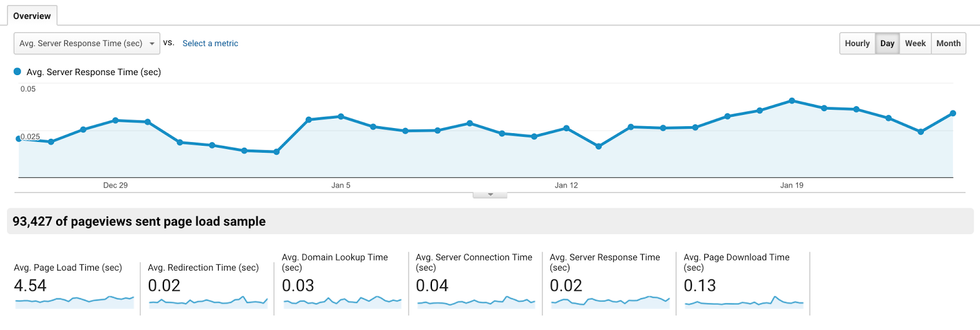Why Server Response Time Is Everything in 2018

In early 2018, Facebook made another big announcement regarding its ever-changing algorithm. This time, it was a shift to prioritize content from family and friends instead of publishers. While the news wrought chaos in the digital world, here at RebelMouse, we ultimately believe this is a good thing for organic growth and social ROI . But neither can be achieved without a speedy site.
Facebook wants fast, mobile experiences that will keep their users happy and coming back to the platform. A core measurement to deduce a site's speed is server response time, the amount of time it takes a server to respond to a browser request. It's something that will make or break your user experience, and it's the crux of building organic loyalty .
The importance of user experience has moved up the ranks in digital publishing over the last several years, and it's something our strategists have been tracking for just as long. With the rise of ad blocking, the birth of mobile experience formats like Facebook Instant Articles and Google Accelerated Mobile Pages (AMP), and the fake news fallout, the need for a quality experience on the internet is more than overdue.
This latest Facebook change brings the next chapter into a hopefully improved digital world. The algorithm shift means your website has to be not only chock-full of good content, but it has to be fast and ignite conversations worthy of repeat visits.
Why Server Response Time Is so Important
Facebook cares a lot about page speed. If a user is going to leave its platform via an external link, the site they're headed to must be perfect — meaning no slow load times due to ad overload . Server response time is a deep measure of how professionally a site was built, which means publishers can no longer buy placement into the News Feed with mediocre sites and experiences.
For instance, if your site has a slow response time, you can't take advantage of Facebook Instant Articles, which can go viral more easily, creating opportunities for meaningful monetization . If your content isn't using Instant Articles and is hosted on a slow site, you won't even get a chance to make it into the News Feed. So not only will your slow response time turn away traffic, you'll miss out on gaining any new traffic.
It's not just Facebook either. Google has long factored in site speed into its PageRank algorithm for desktop experiences, and recently announced that it's about to do the same for mobile . This latest news is now threatening some of the biggest sites on the internet .
What Your Server Response Time Should Look Like
In 2018, media doesn't have the profit margins for big tech teams. There's no purpose in spending money on expensive developers and UX designers. Publishers need to focus on quality content first, and let that become their product.
At RebelMouse, we offer our clients lean tech with global support from a skilled team of developers and designers. And because we're a centralized CMS , our platform is constantly updating and iterating with little-to-no management requirements from our clients, leaving you to focus on creating great content instead. We're a creative agency that blurs the lines between product and strategy roles, always optimizing for viral growth and, perhaps most importantly, speed.
This is what our server response time looks like for some of our clients:
Azula

One Country

How to Make Your Server Response Time Better
There are a lot of reasons RebelMouse powers crazy-fast content. We've built some of the fastest new media companies ever, like The Dodo and Axios . While our passion is for viral content and consistent organic growth, we know neither of these things are possible without a fast-loading experience built around conversation building and repeat business.
So let's start working together. Even if it's not the right time for you to re-platform to a new CMS, we can help you optimize your site's content for speed. We offer a number of strategy services within our creative agency to set your site up for success.















































































